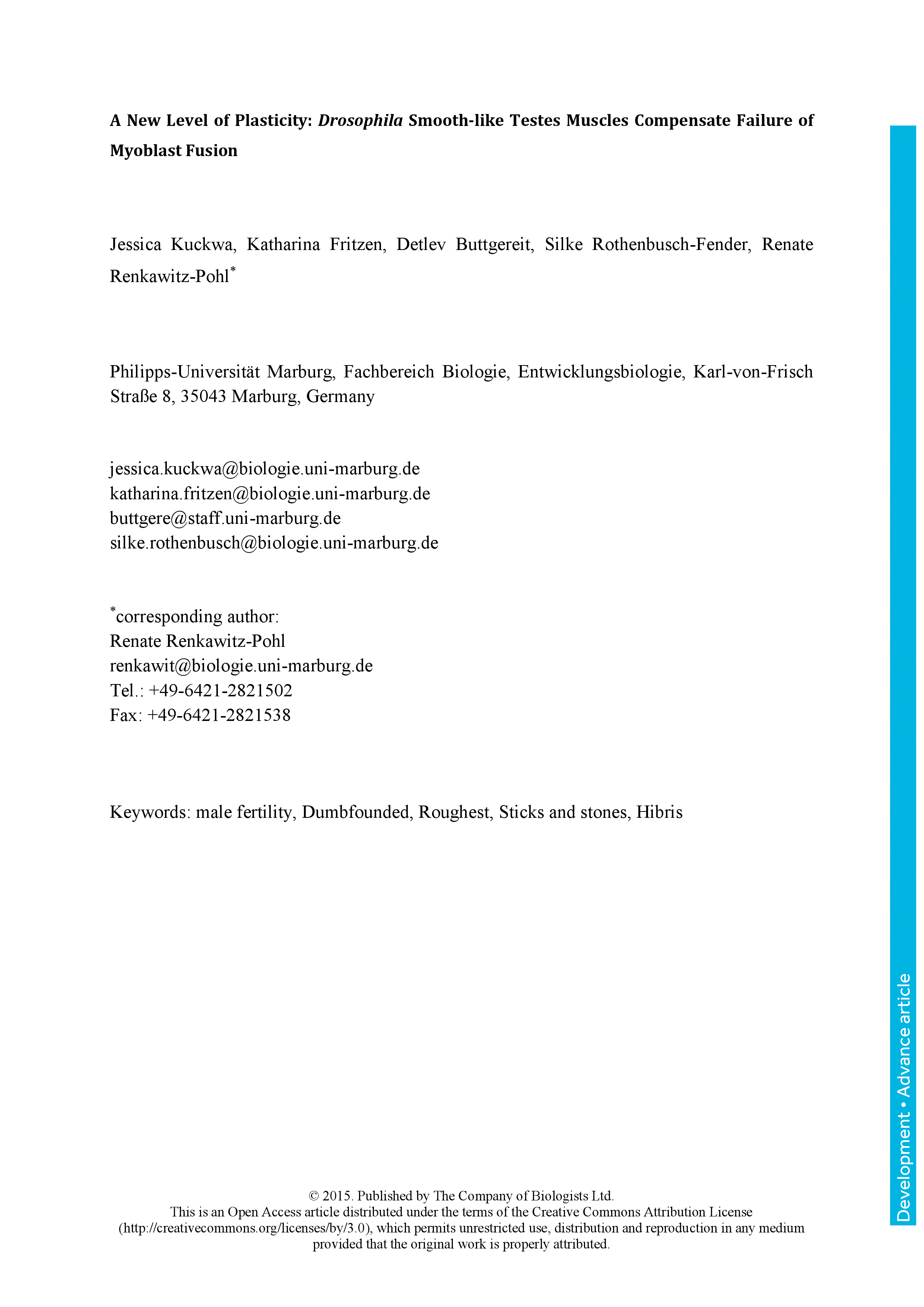The testis of Drosophila resembles an individual testis tubule of mammals. Both are surrounded by a sheath of smooth muscles, which in Drosophila are multinuclear and originate from a pool of myoblasts that are set aside in the embryo and accumulate on the genital disc later in development. These muscle stem cells start to differentiate early during metamorphosis and give rise to all muscles of the inner male reproductive system. Shortly before the genital disc and the developing testes connect to each other, multinuclear nascent myotubes appear on the anterior tips of the seminal vesicles. Here we show that adhesion molecules were distinctly localized on the seminal vesicles; founder cell-like myoblasts (FC-like) expressed Dumbfounded (Duf) and Roughest (Rst), and fusion-competent myoblast-like cells (FCM-like) mainly expressed Sticks and stones (Sns). The smooth but multinuclear myotubes of the testes arose by myoblast fusion. RNAi-mediated attenuation of Sns or both Duf and Rst severely reduced the number of nuclei in the testes muscles. Duf and Rst likely acted independently in this context. Despite reduced fusion, myotubes migrated onto the testes, testes were shaped and coiled, muscle filaments arranged as in the wild-type, and spermatogenesis proceeded normally. Hence, the testes muscles compensated for fusion defects so that the myofibres encircling the adult testes are indistinguishable from those of the wild- type and male fertility is guaranteed.
A New Level of Plasticity: Drosophila Smooth-like Testes Muscles Compensate Failure of Myoblast Fusion
Currently Viewing Accepted Manuscript - Newer Version Available
Jessica Kuckwa, Katharina Fritzen, Detlev Buttgereit, Silke Rothenbusch-Fender, Renate Renkawitz-Pohl; A New Level of Plasticity: Drosophila Smooth-like Testes Muscles Compensate Failure of Myoblast Fusion. Development 2015; dev.126730. doi: https://doi.org/10.1242/dev.126730
Download citation file:
Advertisement
Call for papers: Uncovering Developmental Diversity

Development invites you to submit your latest research to our upcoming special issue: Uncovering Developmental Diversity. This issue will be coordinated by our academic Editor Cassandra Extavour (Harvard University, USA) alongside two Guest Editors: Liam Dolan (Gregor Mendel Institute of Molecular Plant Biology, Austria) and Karen Sears (University of California Los Angeles, USA).
Choose Development in 2024

In this Editorial, Development Editor-in-Chief James Briscoe and Executive Editor Katherine Brown explain how you support your community by publishing in Development and how the journal champions serious science, community connections and progressive publishing.
Journal Meeting: From Stem Cells to Human Development

Register now for the 2024 Development Journal Meeting From Stem Cells to Human Development. Early-bird registration deadline: 3 May. Abstract submission deadline: 21 June.
Pluripotency of a founding field: rebranding developmental biology

This collaborative Perspective, the result of a workshop held in 2023, proposes a set of community actions to increase the visibility of the developmental biology field. The authors make recommendations for new funding streams, frameworks for collaborations and mechanisms by which members of the community can promote themselves and their research.
Read & Publish Open Access publishing: what authors say

We have had great feedback from authors who have benefitted from our Read & Publish agreement with their institution and have been able to publish Open Access with us without paying an APC. Read what they had to say.



